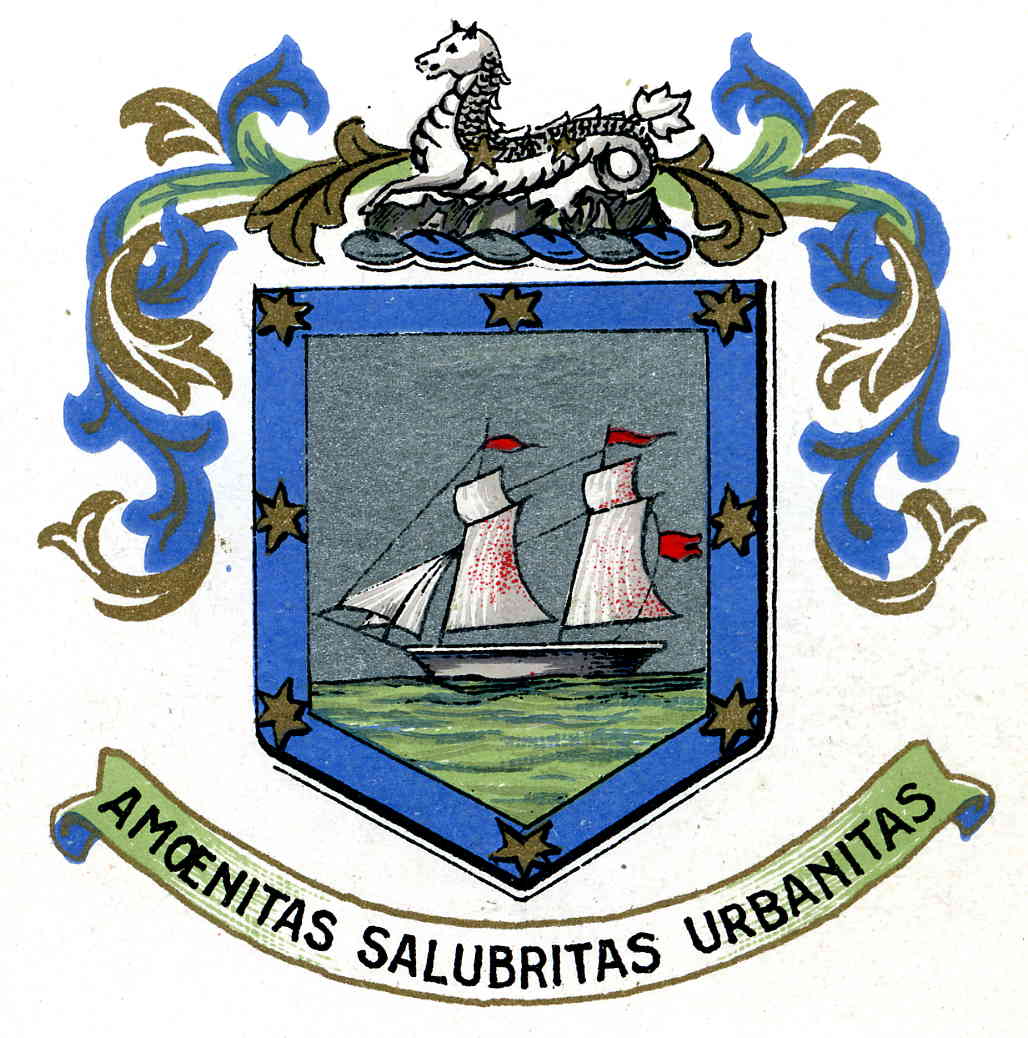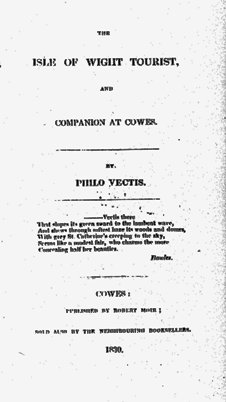
Gleanings from Isle of Wight History
By Alan Champion.
Ventnor, Isle of Wight.
2006.
Being further interesting facets of local history
gathered from written sources.
You may also wish to read :
Champion, Isle of Wight, enthusiast,.
for background and as an introduction to some Island stories which was published in 2000.
This journey through time will be made on a Time Line,
by 'Philo Vectis' in a book called
‘The Isle of Wight Tourist and Companion at Cowes’
published in 1830 by Robert Moir.

Title page. Cr8vo.
CHRONOLOGICAL MEMORANDA OF THE MORE REMARKABLE EVENTS WHICH HAVE TAKEN PLACE IN THE ISLE OF WIGHT,
FROM ITS FIRST DISCOVERY TO THE PRESENT TIME.
From pages 27-46.
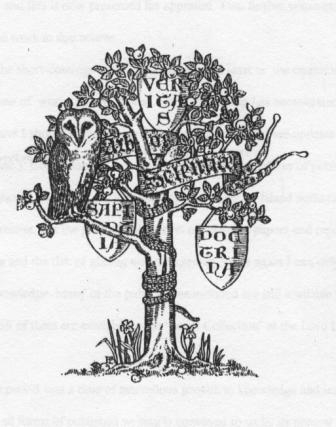
'The Tree of Knowledge.'
From Percy Stone, Architectural Antiquities of the Isle of Wight.
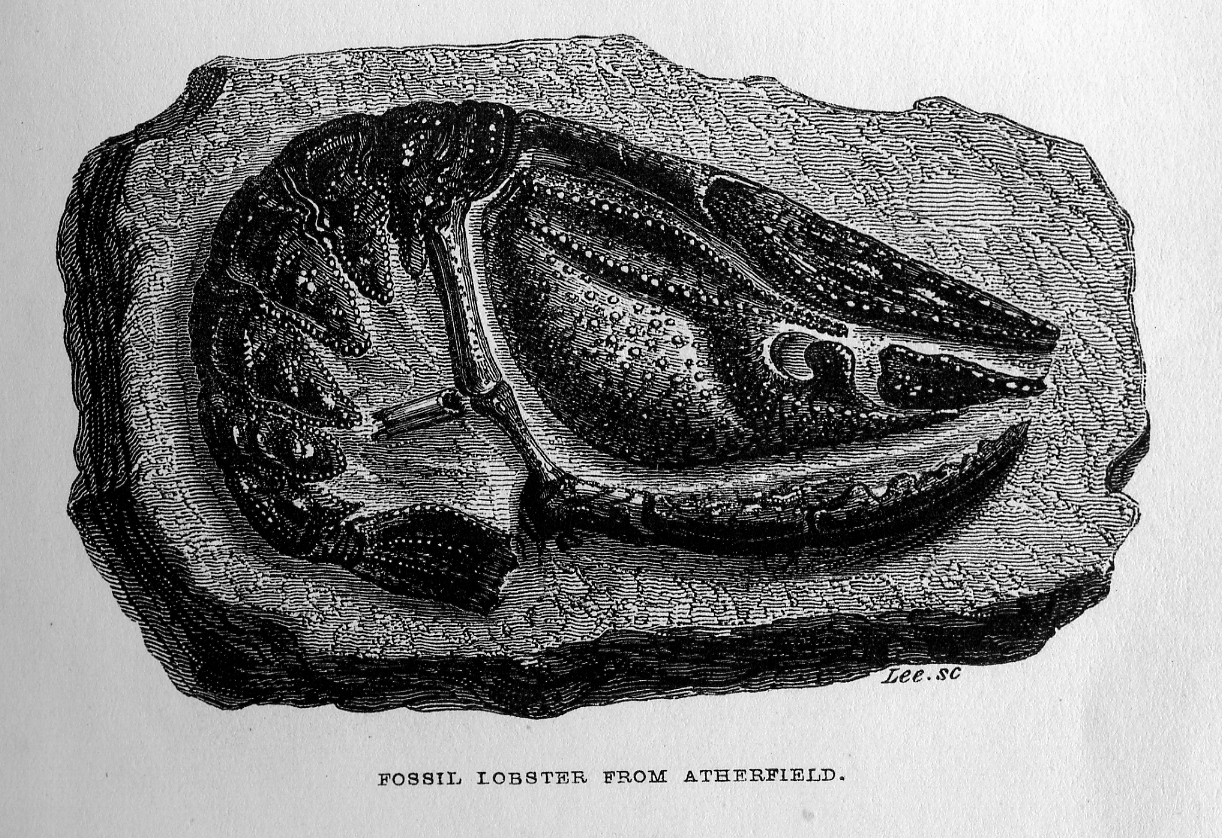
Mayerella magna. Isle of Wight fossil. From Mantell.
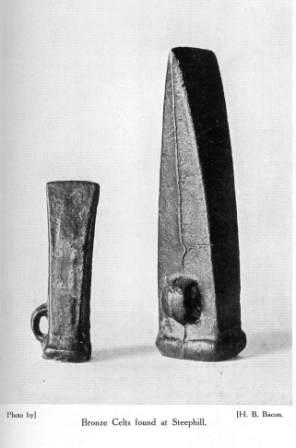
from Whitehead.J.L. The Undercliff of the Isle of Wight. 1911 Checklist no. 837.
Phoenicians said to have traded here for Cornish tin, about 3504.The Greeks of Marseilles reported to have succeeded them in the traffic, about 3800 . A.D. Try this link for an analysis of The Isle of Wight Tin Trade from Hillier.
The Roman standard planted in the Island by Vespasian 43
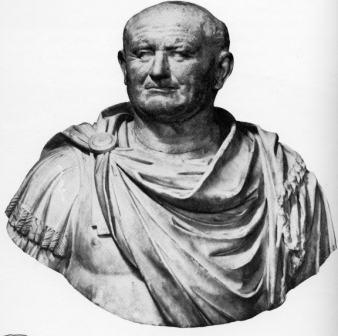
Vespasian
Unsupported tradition fixes the first erection of a fortress at Carisbrooke
about the same time 43
Staple of tin removed from the island to London, about 44
Island said to have remained in much peace under the Roman government for about
400 years. Roman
Wight.
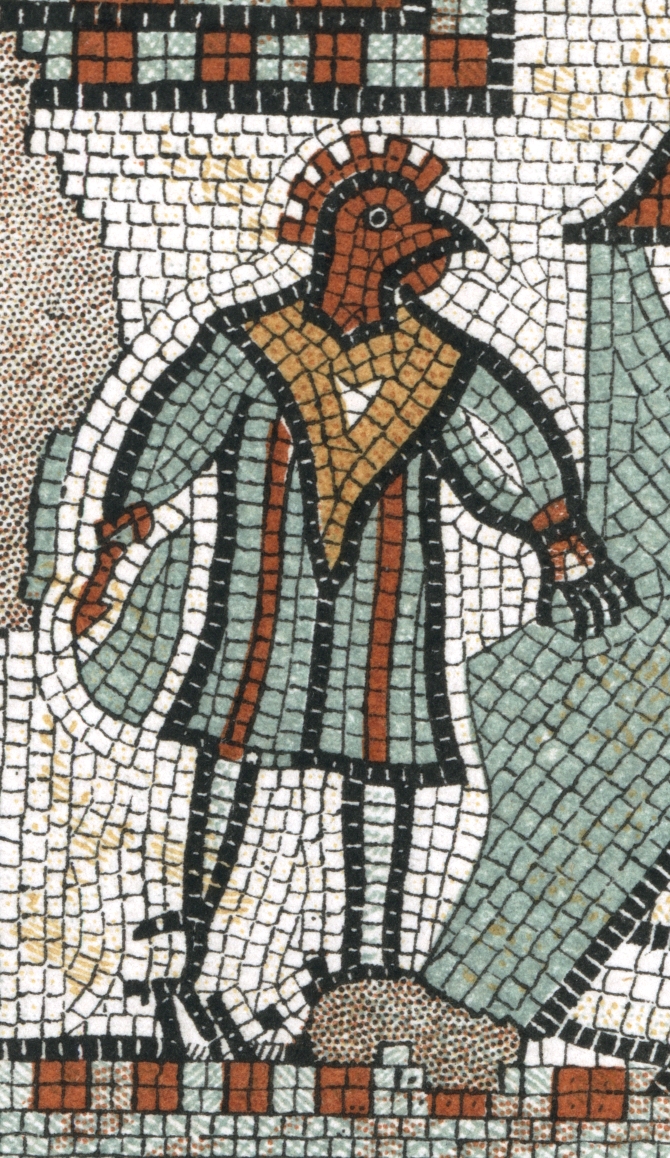
'Gallo' mosaic from Brading Roman Villa.
See Cybele.
The Saxon conquest of Britain, made by Cerdic and Henric in 495
Cerdic took Carisbrooke fortress 530
The Island bequeathed by Cerdic to his nephews, Stuff and Withgar and most of
the natives murdered. 534
The Island first subdued and laid waste, by Wulfer, King of Mercia, and then
given by him as a pious present to Edelwalch King of the South Saxons, his
baptismal sponsor 661
Edelwalch destroyed, and the Island after being ravaged by Caedwalla, a
descendent of Cerdic, was resumed by him as his inheritance 686.
Anglo-Saxon artefacts from Chessell.
Christianity, or at least something bearing its name, introduced into the
Island, under
the sanction of Caedwalla, wino first murdered 900 families of the poor
idolatrous natives, and then placed the remaining 500
under Bishop Wilfred, who had prevailed on him to spare them, if they would
submit to baptism. 686.
E. Boucher James. Letters Archaeological and Historical. relating to the Isle of Wight, London .Henry Froude, Oxford University Press Warehouse, Amen Corner E. C. 1896. In two volumes. This is a valuable secondary source of Island history.
Part of the present Carisbrooke Castle, including the keep built 692
Brading Church
built 720.
Island surprised by Danish pirates 787
Danish pirates plundered the Island, but were afterwards overtaken, and punished
by Alfred 897.
Princess Osburga
She was the daughter of Oslac of Hampshire or the Isle of Wight ( Arreton ). She died in 846.
Repeated attacks of the Danish pirates, from 998 to 1001
Newtown, (or Werrow, a large hamlet near Thorley) burned by the Danes , 1001
Earl Godwin made a descent on the Island , 1052
Carisbrooke Church erected, 1062.
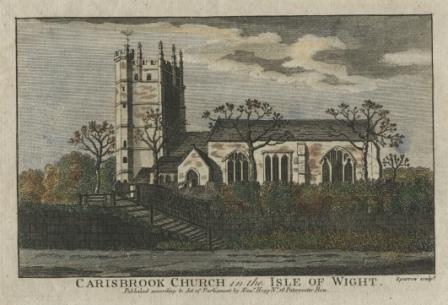
Tosti, Godwin son, again attacked the Wight, 1066
Island bestowed by William the Conqueror, on William FitzOsborn, after the
battle of Hastings, in 1066.
Norman
I.O.W.
Inner area of the present fortress of Carisbrooke Castle built, and the
priory of Carisbrooke, founded by FitzOsborn, about 1068
Roger de Brittenville,* ( *Britteville or Breteuil in Eure, France.) Earl of
Hereford, third son of William FitzOsborn, succeeded to lordship of the Island,
1070. Roger, offended with the King for opposing the marriage of his sister,
conspired with his friends to depose him, but was taken, tried, and sentenced to
perpetual imprisonment, with the forfeiture of his lands, 1078
He died in prison, after resisting some peaceful overtures from William, 1086.

Part of Newchurch Church built before the Doomsday survey , which was made 1086.
The Lordship of the Island alter this, continued in the crown,
until Henry I, granted it to Richard FitzGilbert de Riparis (anglicised to
Redvers de Redvers, or Rivers, a Norman of high descent, 1100.He died in 1107
The lords of the Island allowed their own courts of judicature for the trial of
all other crimes, except treason and murder, about 1120.
The priory of St Cross, in Newport was founded Baldwin de Redvers as a daughter house of the monastery of Tiron, near Chartres..
Quarr Abbey, founded by Baldwin de Redvers, in 1132, afterwards Lord of the Island,
1132 Baldwin succeeded to the lordship, in, 1135 and being a partisan for the Empress Maud, against King Stephen, he, fortified his castle arid the Island for her. They were however taken, and he was obliged to fly the Kingdom with his wife and family, 1135. On the accommodation between Maud and Stephen, Baldwin was restored , and at length died at Quarr and was there buried, 1155. An alien Priory of Cluniac monks existed at St. Helens, before 1155
Newport Church built, about 1155
Richard 11. de Redvers succeeded to the lordship of the Island, and added to his father's provision for the abbey of Quarrera. he died, 1162.
Baldwin II. de Redvers, succeeded his father; The de Redvers family tree
Richard 111. de Vernon, succeeded him and both dying without issue, the Island devolved to William de Vernon, 1184
William de Vernon, was the second son of the 1st Earl of Devonshire. He
called himself Earl of the Isle of Wight. William among the other barons,
suffered from the extortion of King John, who fearful of his resentment obliged
him to deliver his grandson as hostage for his fidelity. King John retired to
the island, to mediate revenge after the forced concessions of Magna Carta, 1215.See
Rapin's History of Englsnd Vol. I p. 277
1724.Hstayed at King's Quay. William de Vernon died and was succeeded by his daughter Joan, wife of the
famous Robert de Burgh, Earl of Kent, 1216
On her dying without issue, Baldwin III. and after him Baldwin IV. were lords of
the Island, the later died about 1240
Yarmouth received its first Charter of franchises from Baldwin V in the reign of
Henry III, about 1250
After the death of Baldwin, 1261 who is said to have died of poison, given him
at the table of his kinsman, Peter de Savoy, the succession devolved on
Isabella de Fortebus who lived in great state at Carisbrooke Castle, 1283.
Isabella founded a cell of Benedictine monks at Appuldercombe, but it said
not-withstanding her benevolence, to have nobly resisted the encroachment of the
monks. From this Countess, Newport received its charter of Franchises.
There was a priory of canons at Barton. now the farm, near Whippingham, in 1284
The Island was sold by Isabella to the crown, for 6000 marks, or four thousand pounds sterling, and the deed signed on her dying bed, in 1293.
Isabella, married William de Fortibus, Earl of Albemarle and surviving him was the Countess of Albemarle and Devon And Lady of the Isle of Wight. did not become Lord of the Island until her mother, Amica, died in1284.
Yarmouth, and Newport, sent members to Parliament, in 1295
Edward I. retained the lordship in his own hands, but appointed wardens to defend the Island, against Philip of France, about 1295
Edward II. gave the custody of the Island to his favourite, Piers Gaveston, 1307
On the remonstrances of the nobility, he took it from him, and gave it to his own son, afterwards Edward III. 1308.
Edward III gave the lordship to his eldest daughter Isabel, Dame de Courcy, Duchess of Bedford, 1355-1377
Hermitage at Chale, known, by the registry of Winchester Churches, to have been standing in 1312
A small chapel built on St. Catherine's hill, by Walter de Godyton, 1323. St Catherine's Oratory. The Pepper Pot. Chale Manor
Sir John Oglander says that there were above a hundred churches, chapels, abbeys, priories, nunneries, and oratories in the Island, 1337
The Islanders, who were inclined to leave, from the danger of a French invasion, compelled by Edward III. to remain, on pain of forfeiting their property, about 1340
Only three ports allowed in the Island, and none out licensed boats allowed to land, except those of Sir Bartholomew de Lisle, Robert de Pimeley, and the Abbot of Quarr, 1340.
The French invasion of 1377. The towns of Yarmouth Newtown and Newport burnt.
Node Hill, Newport, rendered famous as the burial place of French invaders, who were here slain by an ambuscade placed in defence of Carisbrooke Castle. They were called by the natives ' noddia' or 'noddies' from whence the present name. 1378
The Lordship of the Island granted by Richard II William Montacute, Earl of Salisbury, 1386
On the death of William in 1397, Thomas Holland, Earl of Kent, and afterwards Duke of Surrey, had a grant of the custody of Carisbrooke Castle, with I s. fees for his life. He was beheaded, 1399.
Edward, Earl of Rutland, and afterwards Duke of York, obtained a grant of the Island. He was degraded by Henry IV. and inconsequently entered into a conspiracy to kill the King at Windsor on the twelfth night, but disclosing the plot, was pardoned and reinstated in his lands. He afterwards obtained leave to lead the van at the battle of Agincourt but 'being a fat man was thrown down, and smothered in the throng' 1415
Philippa, Duchess of York, obtained a grant of the island on his death, 1415.,
French landed for the purpose, as they said, of "keeping Christmas", but met with sorry reception and were repulsed, 1418
Humphrey, Duke of Gloucester, sometimes called the good duke, succeeded to
the lordship 1439
Henry de Beauchamp, Duke of Warwick, crowned King of the Island by Henry VI
1445..Henry de Beauchamp
Richard Plantagenet, Lord of the Island, 1449.

The Attack on the Isle of Wight.
1567 The Ledger Book of Newport, I. W. !567-1799.
Edmund , Duke of Somerset, obtained a grant of this of the Island, by the parliament, and respectfully received by the gentlemen and principal farmers who assembled at Cowes, for this purpose, October 3rd , 1642. He died at the first Battle of St Albans. He was succeeded by his son, Henry Duke of Somerset. He became a Yorkist then returned to the king side He was captured by Yorkists at the Battle of Hexham and was beheaded.
Anthony de Wydevflle, Lord Schales, later Earl Rivers, obtained a grant of the Castle and rights of Lordship in 1467. After the death of Edward IV in 1483, Anthony appeared to be standing in the way of the ambitious Duke of Gloucester. He was seized and without trial, was beheaded in Pontefract Castle that same year.
Sir Edward Wydeville, brother of Anthony, was made Captain of the Island in 1490. It is uncertain as to whether he was made Lord of the Island, but it seems likely. Soon after his appointment, he led an expedition to France, to assist the Duke of Brittany against the French King. 40 gentlemen and about 400 commoners embarked at St Helens on four ships. They were joined in Brittany, by 1500 of the Duke's soldiers but were disastrously defeated. Sir Edward and all his men were slain, save one boy, who brought home the bad news. There was hardly a family on the Island who didn't lose a relation in that Ill-fated expedition. Sir Edward died unmarried.The Battle of St Aubyn. -en- Cormeilles.
Sir Reynold Bray.1495-1503 received a grant of the Castle and Manor of Carisbrooke.
Sir Nicholas Wadham 1509--1520 was Captain of the Island.
Hot off the
press. .
Princess Cecily Plantagenet. By Sharon Champion. 27.3.09.
Princess Cecily, daughter of King Edward IV died and was buried at Quarr Abbey, 1507.
Sir James Worsley 1520-1538, whipping boy to Prince Henry, later Henry VIII was the next Captain.
Queen Mary nominated William Girling 1554-1556.
William Powlett, 1st Marquis of Winchester 1556-1560 proposed himself as Governor of the Isle of Wight.
Richard Worsley was Captain from 1560-1565 on Queen Elizabeth's succession .
Sir Edward Horsey 1565-1583 was the next Captain and lived at Heasley Manor with the widow Dowsabel Milles. He died in 1582 of the plague.
George Carey, Baron Hunsden 1583-1603 was the next Captain.
Henry Wriothesley, Earl of Southampton, 1603- 1624 was made Governor by James I.
The Governorship of Edward, Viscount Conway of Raglan 1631-1633 was succeeded by that of Richard Weston,1st Earl of Portland 1631-1633.
His son, Jerome Weston, 2nd Earl of Portland 1633-1642 followed him as Governor,
Phillip Herbert, 4th Earl of Pembroke 1642-1647, a Parliamentarian was the next Governor

Colonel Robert Hammond 1647-1648 was appointed governor of the Island, and received, (at first as his guest), King Charles I at Carisbrooke Castle, November 12th,
1647.
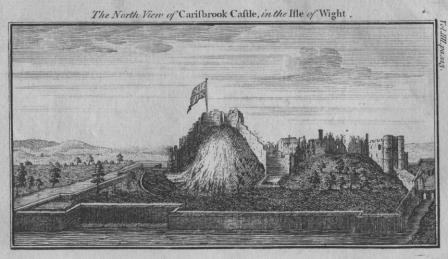
North View of Carisbrooke Castle.
After Samuel and Nathaniel Buck's View in 'Views and Ruins etc. 1733. Checklist no. 152.
Reproduced from G. Bates. 'The Counties of England. 1760.
King Charles to escape from the window of what he now discovered to be his prison, December 24tth, 1647.
After making some other fruitless attempts to escape, Charles met the commissioners of the Parliament at the Free School, Newport, at various times from September 18th to November 25th., 1648.
The King seized by the army, and conveyed to Hurst Castle, November 29th, 1648
Colonel Sydenham succeeded Colonel Hammond, 1649.
Princess Elizabeth , second daughter of Charles I. died at Carisbrooke, September 8th, 1650.
Isle of Wight Militia raised, and charged, in case of invasion 'to raise the gare, ring the bells and send about the hoblers to give alarm', 1651.
West Cowes Chapel of Ease built, 1653.
Lord Culpepper appointed governor, on the re-establishment of the regal power in England, 1660.
Aluminous Chalybeate Spring discovered at Shanklin , by Dr. Frazer*, Physician to Charles II. 1663.(quoted in Monopole’s Shanklin Spa.)
The inhabitants complain to the King of Lord Culpepper, who though permitted by the King to continue governor, chose to resign soon after Admiral Sir Robert Holmes at Freshwater succeeded him .1661-1669.
King Charles II visited Sir Robert Holmes at his large house, now the George Inn, Yarmouth, 1671.
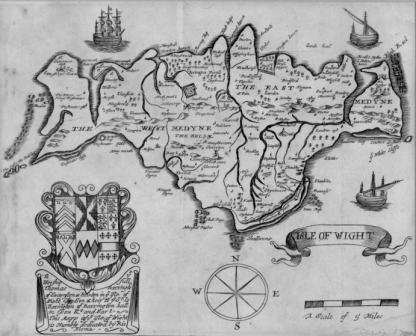
R. Blome. A Mappe of the Isle of Wight. 1673.
From Richard Blome's Britannia, or, A Geographical Description of the Kingdoms of England Scotland and Ireland. London 1673
Scale 5 miles/inch
John, Lord Cutts, made governor soon after the death of Sir Robert Holmes,
1693.
This Governor having disfranchised several burgesses of Newtown, and imprisoned
a clergyman for several weeks in Cowes Castle, the gentlemen of the Island
prepared a petition to the House of Commons, complaining of his arbitrary
character, He was prudent enough to see, and to confess, that he had gone too
far, and having retraced his steps, became a popular Governor till his death, in
1706
Charles, Marquis of Winchester succeeded Lord Cutts, and was afterwards assisted
by a lieutenant governor with a salary of 20s.per diem 1707
Appuldurcombe House begun, on the site of a priory, by Sir Robert Worsley in
1710
Appuldurcombe.
General Webb, governor, in 1710
William Lord Cadogan, in 1715
A new church built at St. Helens, and the remains of the old one left as a
sea-mark, 1719
Charles Powlett, Duke of
Bolton, governor, in 1726
John, Lord Lymington, succeeded in 1734
Ashey sea-mark, erected on the down 1735
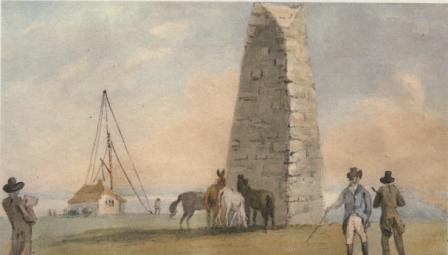
Ashey sea-mark by Nixon
Chapel of Carisbrooke Castle, dated 1738
St Nicholas in castro.
Charles, Duke of Bolton, re-instated as governor 1742
John, Lord Lymington,
Earl of Portsmouth,
now
became again Governor of the island 1745
A quantity of gold dust being found mingled with the sands
in Chale bay, the inhabitants supposing there was a mine in the neighbourhood,
expected to be made rich in a trice; but, Spanish dollars being also found they
were at length reluctantly convinced that both came from the wreck of a Spanish
vessel, 1750.
Pieces of
Eight.
Gatcombe House, built by Sir Edward Worsley, in 1750.
The Newport Blue School Foundation. 1764
The Royal Lancastrian School at Newport
Instituted in January 1813
'The Coburg,' the first steam packet to the Island commenced running from
Southampton to Cowes, 1817
Cattle market instituted at Newport, 1820
The Earl of Dysart,
Wilbraham Tollemache. died, 1821,
Lord Henry Seymour received the honour of a visit from his most gracious
majesty, George IV and on the day that His Majesty dined at Norris Castle, the
poor of the Parish of Whippingham dined on the castle grounds. This benevolent
nobleman thus evinced his regard for the 'rich and the poor,' in 1821
The Royal Yacht Club founded, about 1821.
The Isle of Wight Philosophical Society formed, about, 1822.
The barrows on Arreton and Shalcombe downs, and the ancient graves on Chessel
Down, opened, and found to contain skeletons, partly-burnt bones, various
weapons, trinkets ,urns, etc. between 1817 and 1824,
Anglo-Saxon Cemeteries.
'The Mechanics' Institution' at Newport commenced. 1825.
Cowes parade enlarged, 1826
Fresh landslip, in the grounds of
'East
Dene', the home of
W. H. Surman, Esq. near Bonchurch, 1827.
The East end Landslip.
New church at Bembridge erected, 1827
The barque 'Melville Watson,' wrecked in Chale Bay, May 27th 1827
The 'Happy Return', loaded with tin, was wrecked on Warden Ledge. The master had
put into Yarmouth to obtain assistance for a female in labour on board, and the
vessel afterwards drifted on this dangerous bank.
Mr Wavell*, of Newport, whose benevolent ardour, in his profession,
had led him to visit this woman a second time, (contrary to the advice of the
boatmen, fell a victim to his honourable assiduity, and was drowned; but most of
the crew were saved, 1827.
A new church erected at Ryde, and the old one also rebuilt, 1828
Some time after the melancholy death of a poor lad,
Valentine Gray.,
who was smothered in one of the chimneys at the barracks, a society was formed
in the Island to superseded the employment of climbing boys:- this attempt to
abolish the practice of treating white boys worse than black slaves made in 1828
The Borough of Newport was represented in Parliament by the Right Honourable
George Canning, 1828
'The Carnbrea Castle', East India trader, wrecked off Brook Ledge, July 1829
The schooner 'Nightingale,' wrecked on the shingles. The loss of this vessel was
rendered unusually affecting by the circumstance of its being left with a
lieutenant of the navy on board, who, being a maniac, was on his way to a place
of confinement.
He appeared to have recovered his reason during the dangers of the voyage, but
was unhappily drowned, 1829
Ryde paved, and converted from a village to a town, 1829
The New Road, Cowes by the shore, to Egypt Point formed. 1829
Great improvements in Cowes Castle, and the new landing place on the parade, made 1830.
Extract from:- ‘The Isle of Wight Tourist and Companion at Cowes.’
By- "Philo Vectis".
Published by Robert Moir, 1830.
Original text in Times new Roman 12 point.
Editor's comments in Arial 10 point italic.
To Be Continued. See also: Welcome to my
website. Champion: Isle of Wight Enthusiast.Try
These!
More Gleanings from Isle of Wight History.
